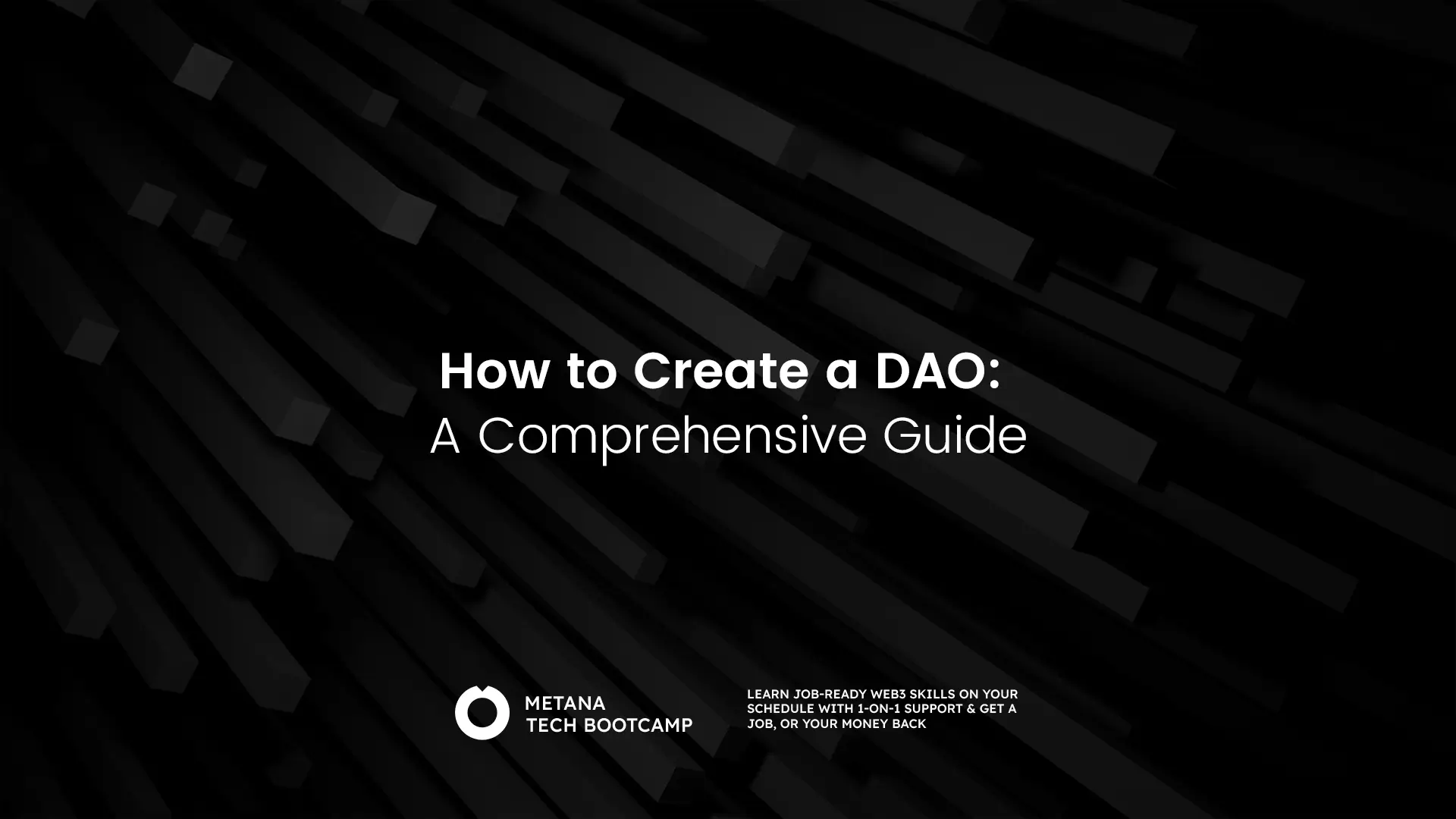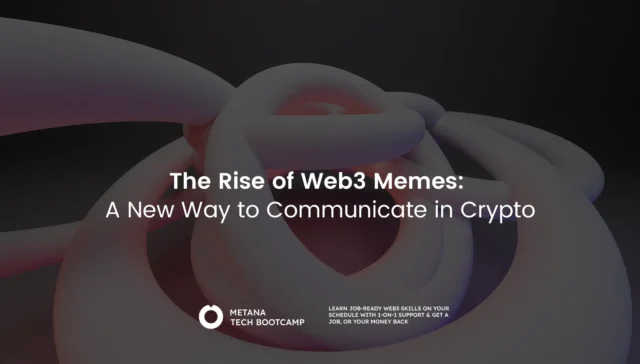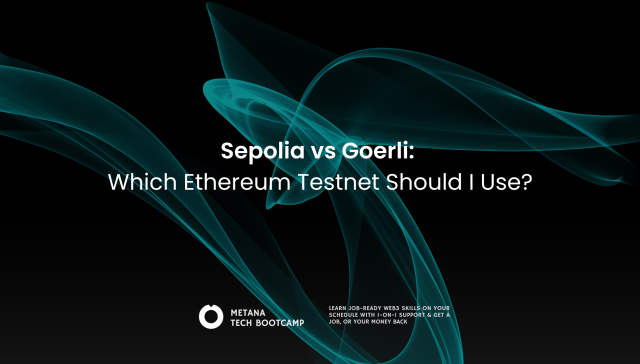In the fast-paced world of digital tech, Decentralized Autonomous Organizations (DAOs) are changing how we think about organizations. A DAO is a group that runs on blockchain. It works based on rules set up in smart contracts. This means a DAO can run itself, without needing a central authority, and is guided by what its community members agree on.
In this article, we’re going to tell you all about DAOs and show you how to create a DAO on your own. You’ll learn not just about DAOs, but also how to use the power of blockchain to make decisions and govern in a decentralized way. So, let’s jump into the exciting world of DAOs and see how you can create your very own.
Understanding DAOs
Decentralized Autonomous Organizations (DAOs) run by themselves on blockchain technology, without any central power. DAOs work based on rules set up in smart contracts, and make choices based on what their community members agree on. This creates a fair way of running things.
DAOs are really cool because they are decentralized, open, and fair in the way they are run. Choices are spread out among all members, and the more tokens you hold, the more you can vote. This encourages everyone to take part in making decisions. Everything a DAO does is recorded on a public blockchain, which makes it trustable and accountable.
There are some really successful DAOs out there like MakerDAO, which keeps its own stablecoin stable, Aragon, which lets you create and manage DAOs, and MolochDAO, which funds projects on Ethereum. As the Web3 space grows, DAOs could change the way we think about running organizations and making decisions in a decentralized world.
Steps to Create a DAO
To create a DAO, it involves multiple steps, each requiring careful thought and execution.
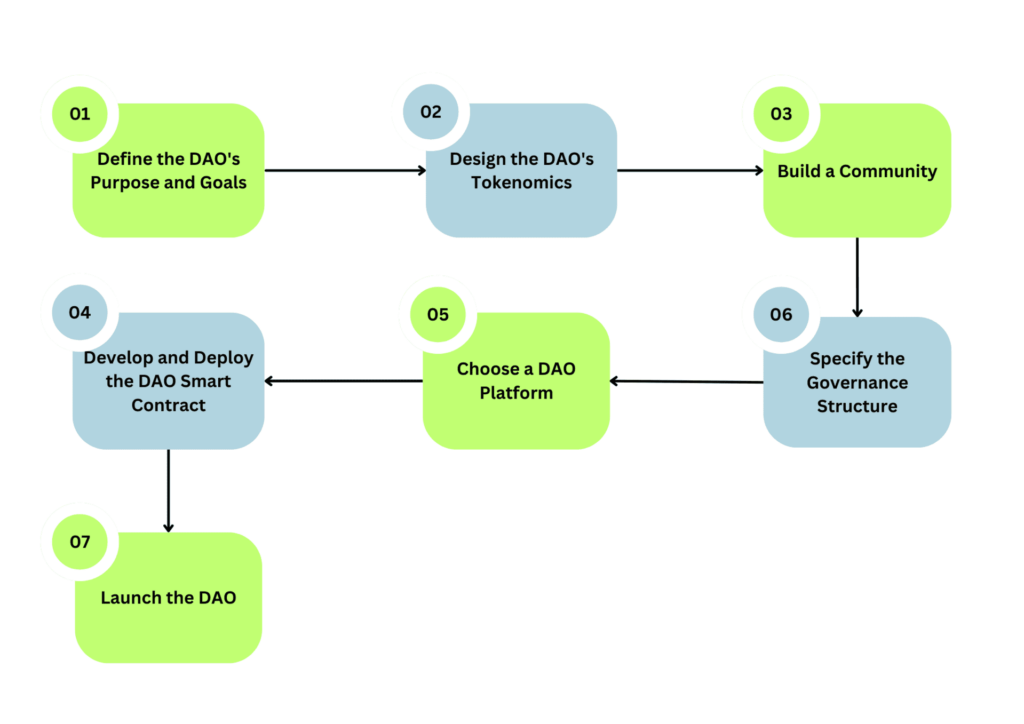
01. Define the DAO’s Purpose and Goals
The first step is to define the purpose and goals of your DAO. This involves identifying a key problem or challenge which the DAO would address. The problem could span across various sectors such as financial, social, environmental, and more. This step also includes defining long-term objectives for the DAO that align with resolving the identified problem. For instance, if the problem is inadequate provision of public goods, the long-term goal could be enabling crowd-sourced funding for such projects. The target audience for the DAO should also be determined at this stage. This could be anyone who is affected by or interested in the identified problem or cause.
02. Design the DAO’s Tokenomics
Next, the DAO’s tokenomics must be designed. This includes deciding upon the native token of the DAO, which could be used for various purposes within the DAO such as voting, accessing specific services, or incentivizing specific kinds of behavior. Details regarding the distribution of tokens, such as how many tokens will be minted initially, the methods for future token issuance, and whether any tokens will be reserved for specific purposes (like development or marketing) need to be laid out.
03. Build a Community
A DAO is only as strong as its member community. Potential members who are interested in the DAO’s mission need to be identified and engaged. This step often involves creating online spaces for members to interact, such as forums, chats, podcasts, or newsletters. The DAO should also actively promote itself to attract new members. This can be done via social media, collaborations with other communities, attending and organizing events, and more.
04. Specify the Governance Structure
Defining the DAO’s governance structure involves deciding on how the decision-making process will be conducted. This might involve setting up voting rules (such as the number of tokens needed to make a proposal and the percentage of votes required to pass a proposal), creating structures for accountability and transparency, and setting up guidelines for community interaction.
05. Choose a DAO Platform
The next step is to choose a platform on which the DAO will be built. Several options like Aragon, DAOstack, and Colony offer different features and tools for creating and operating a DAO. The choice of platform should be based on factors such as its alignment with the DAO’s goals, ease of use, level of decentralization, and the extent of community and developer support.
06. Develop and Deploy the DAO Smart Contract
The DAO operates via smart contracts, which are self-executing contracts with the terms of agreement directly written into lines of code. The smart contract must be developed according to the DAO’s rules and governance structure. Given the immutable nature of smart contracts, they should be thoroughly audited by security experts to avoid any potential vulnerabilities or loopholes.
07. Launch the DAO
After all the steps have been completed, the DAO is ready to be launched. Once the DAO is launched and the smart contract is deployed, membership can be opened up for interested participants. Continual promotion and active management of the DAO is required to grow the community and ensure smooth operations.
Creating a DAO can be a complex process, given the various technical, social, and regulatory considerations involved. However, with careful planning, consultation, and execution, a DAO can offer a decentralized, democratic, and transparent platform for collective decision-making and collaboration.
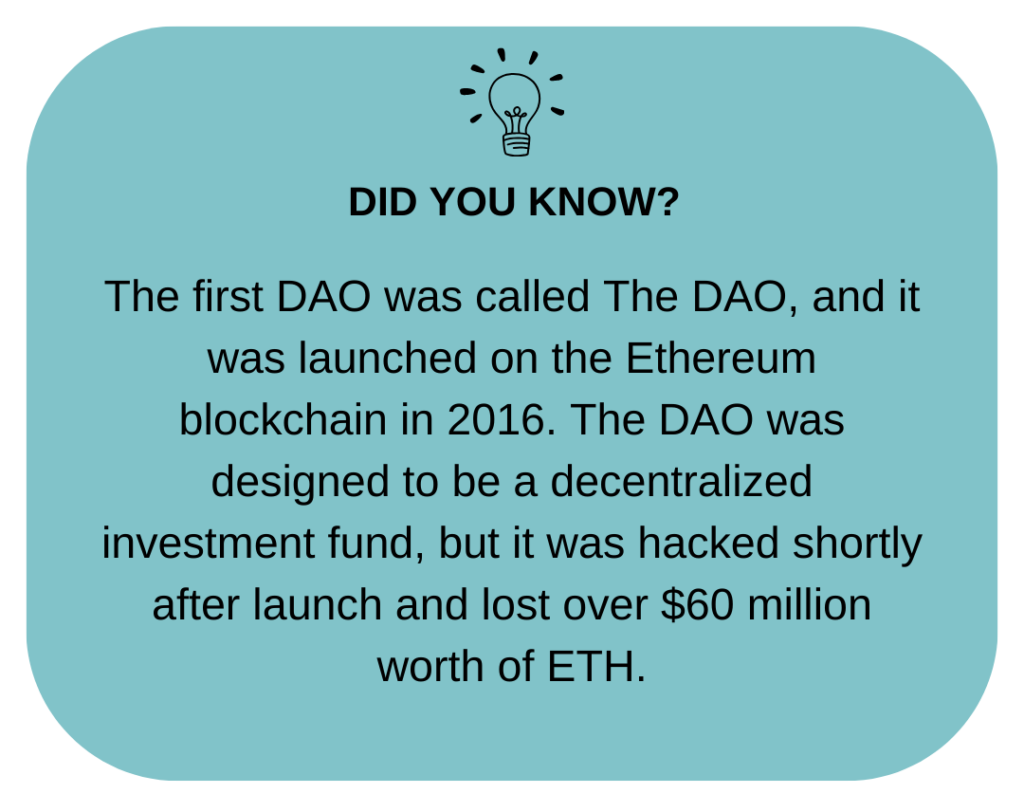
Prerequisites for Starting a DAO
Starting a DAO requires a firm grasp of several key concepts:
- Blockchain Technology and Smart Contracts: As the foundation of all DAOs, understanding how to work with blockchain and craft smart contracts is crucial.
- Governance Model: A clear, fair, and robust governance model is vital, outlining how proposals are made and votes are conducted.
- Funding and Token Economics: A DAO needs funding to operate. Understanding token economics helps decide how many tokens to mint, their distribution, and usage within the DAO.
- Community Building: Creating a strong, engaged community is fundamental for a DAO. It involves attracting suitable members, encouraging open communication, and incentivizing participation.
In essence, setting up a DAO goes beyond mere technical execution. It involves careful planning, understanding blockchain technology, and fostering a strong community.
Challenges and Considerations While Creating a DAO
Creating a DAO involves managing various challenges:
- Regulatory Compliance: Navigating the evolving and complex legal landscape for DAOs is crucial. Engaging legal counsel with blockchain expertise and staying updated on regulatory developments can be helpful.
- Smart Contract Bugs: Smart contracts, though integral to DAOs, are prone to bugs and security risks. Thorough testing, formal verification methods, and external security audits can help ensure their security.
- Governance Issues: DAOs may face challenges like low voter turnout or vote manipulation. Implementing voting systems that promote participation, and having clear dispute resolution mechanisms can help address these issues.
- Community Engagement: Building and maintaining an active community is key but challenging. Regular communication, transparency, incentivizing participation, and providing platforms for open discussion can enhance engagement.
Overall, while creating a DAO comes with challenges, careful planning, due diligence, and effective strategies can help establish a robust, sustainable DAO.
Conclusion
Creating a DAO involves clearly defining its purpose and goals, designing tokenomics, fostering a community, establishing governance, and developing and deploying smart contracts. Active and informed participation in the DAO ecosystem is encouraged. DAOs, with their promise for decentralized governance, open up opportunities for community empowerment and innovation. The future of DAOs is set to revolutionize governance and collaboration, offering a more transparent and inclusive approach to decision-making.
Additional Resources
For those interested in deepening their understanding of Decentralized Autonomous Organizations and related concepts, here are some valuable resources:
- Ethereum.org’s guide to DAOs: A comprehensive guide on DAOs, how they work, and how to get involved.
- CryptoZombies: An interactive code school that teaches you to write smart contracts in Solidity through building your own crypto-collectables game.
- Coursera’s Blockchain Basics: A beginner-level course on Coursera that covers the basics of blockchain technology.
These resources can help you gain a well-rounded understanding of DAOs and equip you with the knowledge and skills to create or participate in a DAO. Happy learning!

- What is a DAO in Blockchain?
A DAO, or Decentralized Autonomous Organization, is an entity that operates autonomously on blockchain technology without a centralized authority, making decisions based on the consensus of its member community.
- How Do DAOs Work?
DAOs operate through rules encoded as smart contracts on the blockchain. These rules govern everything from decision-making processes to the distribution of voting rights among members.
- Why Are DAOs Important?
DAOs offer a new model of organizational governance that is transparent, democratic, and resistant to censorship. They can transform various sectors by eliminating the need for intermediaries and enabling direct, decentralized decision-making.
- How Do You Create a DAO?
Creating a DAO involves several steps, including defining its purpose, designing its tokenomics, building a community, specifying its governance structure, developing and deploying smart contracts, and launching the DAO.
- What Is the Role of Tokens in a DAO?
Tokens in a DAO typically represent membership and voting rights. They can also be used to incentivize certain behaviors or to access specific services within the DAO.
- How Are Decisions Made in a DAO?
Decisions in a DAO are typically made through a democratic voting process. Members can propose changes or actions, which are then voted on by the community.
- How Can DAOs Be Used?
DAOs can be used for a wide range of purposes, such as managing decentralized funds, enabling decentralized decision-making, supporting projects in open-source development, and much more.
- What Is DAO Governance?
DAO governance refers to the rules and processes by which a DAO operates and makes decisions. This can include voting mechanisms, proposal handling, conflict resolution, and more.
- How Can I Join a DAO?
Joining a DAO typically involves purchasing or earning the DAO’s native tokens, which represent membership and voting rights. Each DAO may have its own specific process for welcoming new members.
- What Are DAO Smart Contracts?
DAO smart contracts are self-executing contracts stored on the blockchain that define the rules of the DAO. They govern everything from decision-making processes to token distribution and voting mechanisms

